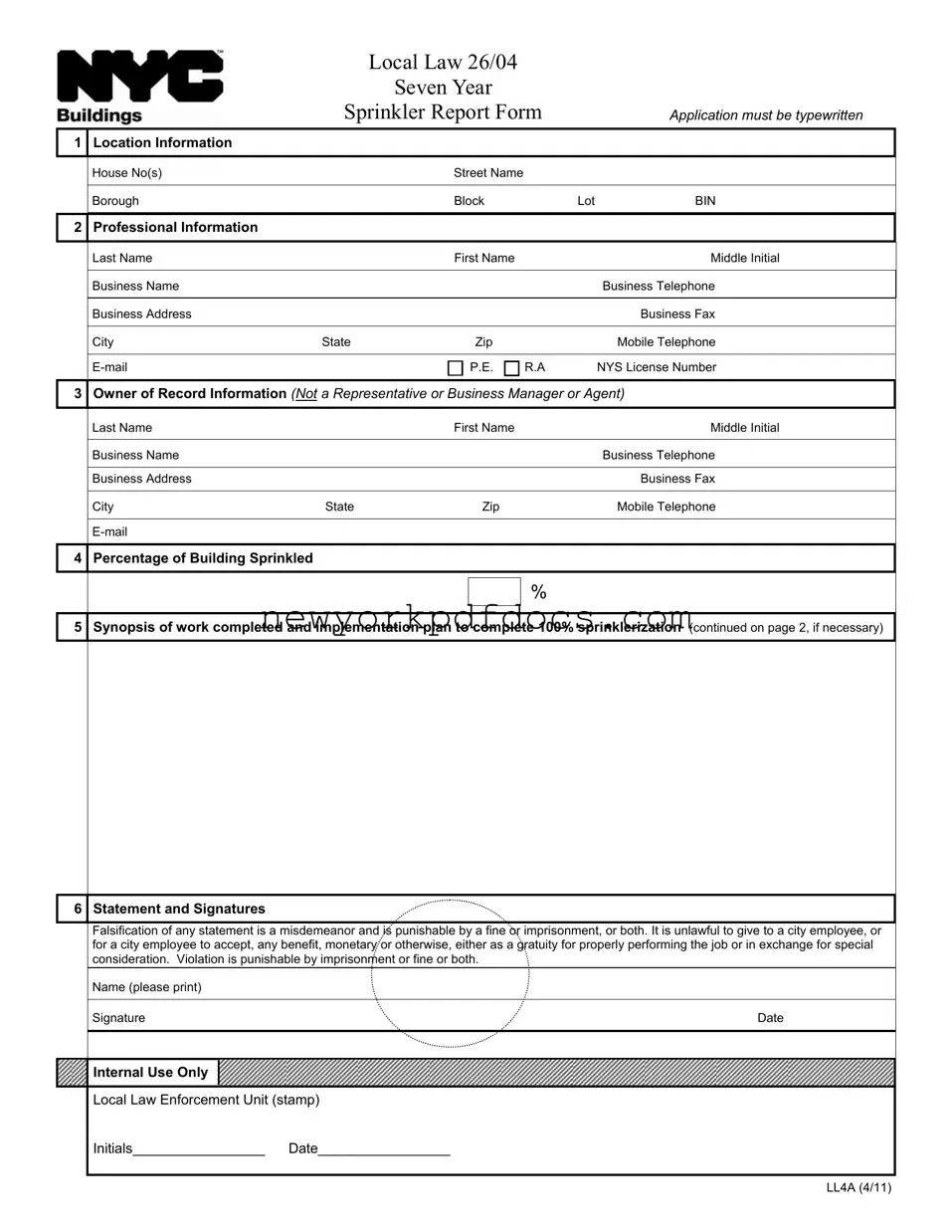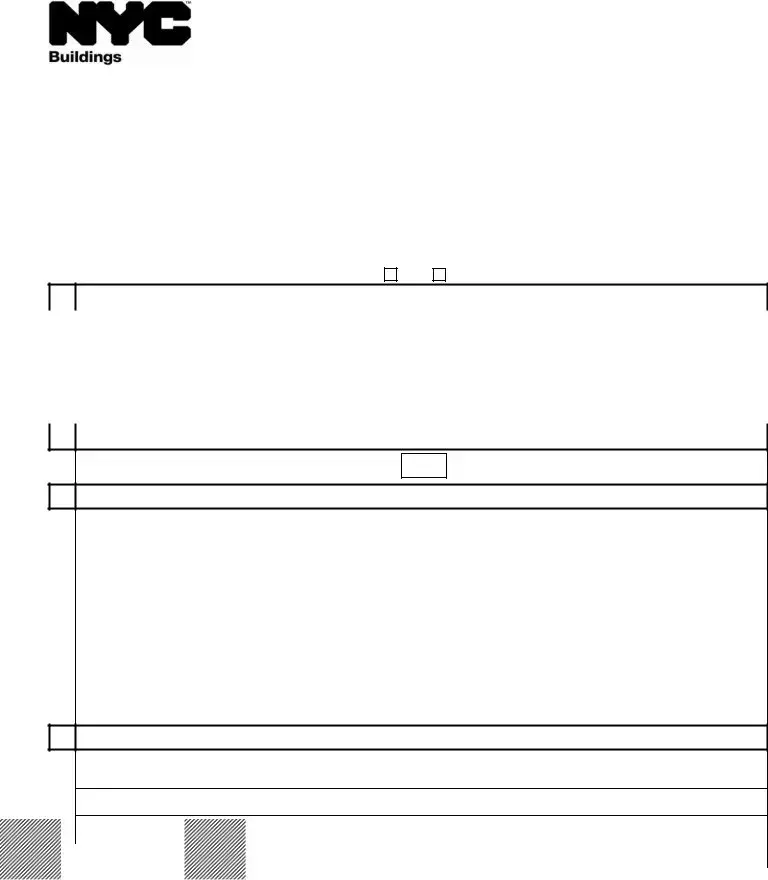Filling out the NYC LL4A form requires careful attention to detail. One common mistake is failing to provide complete location information. Applicants often leave out critical data such as the house number, street name, borough, block, lot, or BIN. Incomplete information can lead to delays in processing the application.
Another frequent error involves the professional information section. Individuals may neglect to include their full name, business name, or contact details. Omitting these elements can hinder communication and affect the application’s status. Additionally, not providing a valid NYS License Number is a significant oversight that can lead to rejection of the form.
People often confuse the owner of record information with that of a representative or agent. It is crucial to ensure that the information provided pertains strictly to the owner of record. Misidentifying the owner can result in legal complications and may require resubmission of the form.
Percentage of building sprinkled is another area where mistakes occur. Applicants sometimes enter incorrect percentages, which can misrepresent the status of the sprinkler system. Providing accurate figures is essential for compliance with local laws.
The synopsis of work completed and the implementation plan is critical. Some applicants fail to provide enough detail or clarity in this section. A vague description may not adequately convey the work done or future plans, leading to questions from the reviewing authority.
Signatures and dates must be included in the statement section. Failing to sign or date the form can render it invalid. This error is easily overlooked but can significantly impact the processing of the application.
Moreover, applicants sometimes overlook the requirement for a professional engineer or registered architect seal. This seal must be applied correctly, followed by a signature and date over the seal. Neglecting this step can lead to the form being deemed incomplete.
Another mistake is not reviewing the form for accuracy before submission. Simple typographical errors can create confusion and delay the approval process. A thorough review helps ensure that all information is correct and complete.
Finally, applicants may not be aware of the legal implications of falsifying information on the form. Understanding that providing false statements is a misdemeanor can encourage individuals to take the process seriously and avoid careless mistakes.


